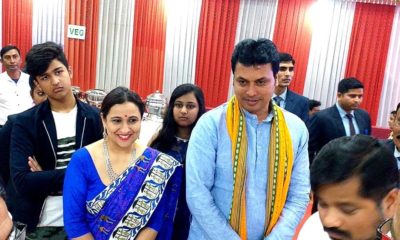World
Pakistani activist’s murder witness shot dead

Islamabad: A police constable, who was the driver of slain Pakistani social activist Sabeen Mahmud and was a witness to her killing in April, was shot dead in Karachi city, police said.
The 48-year-old Ghulam Abbas was shot dead outside his home in Korangi area on Monday night,a police officer as saying.
Two men on a motorcycle opened fire at him and escaped. He suffered three bullet wounds and died on the spot, a senior police officer said, adding that the attackers had been identified by two witnesses and initial findings suggested that they had come to see him a few days ago.
Sabeen Mahmud, a social media campaigner and human rights activist, was shot dead on April 24 minutes after the end of an interactive discussion ‘Unsilencing Balochistan’ she had organised at her social forum – T2F. It was attended by journalists and rights activists, including the founder leader of the Voice for Baloch Missing Persons, Abdul Qadeer Baloch.
In June, police claimed to have busted a gang of militants which had attacked a bus carrying members of the Ismaili community near Safoora Goth. The militants had also confessed to killing Mahmud because of “her views about Lal Masjid’s cleric Abdul Aziz, Valentine’s Day and Burqa (veil).”
The killing of her driver is a major setback to investigations into her murder, though police are not sure if the two killings are linked.
“Ghulam Abbas used to work as Sabeen Mahmud’s part-time driver. The witnesses insisted that the attackers knew him personally so we can’t reach any conclusion with authority about the motive behind the killing,” the police official said.
But for investigator Raja Umer Khattab, it might be an attempt to eliminate the key witness who had identified the suspected killers in court during the trial of the case.
“At the time of the attack Sabeen Mahmud was driving the car with Ghulam Abbas sitting on the rare seat,” he said, adding that it would not affect the case because Ghulam Abbas had already identified Sabeen’s killers and his role in the case was already closed.
World
Lockdowns in China Force Urban Communities to Defy Censorship and Vent Frustration Online

Shanghai’s rich middle class is leading a wave of online dissent over the strict and prolonged lockdowns imposed in various parts of the country. Chinese internet censorship is struggling as patience is wearing thin in many urban centers, coming up with creative forms of online protests.
Social Media Posts Revealing Lockdown Tension in Shanghai
Drawn-out lockdowns are nothing new in China as authorities insist with the nation’s zero-Covid policy since the start of the pandemic. Currently over This time around, however, metropolitan areas like Shanghai are increasingly difficult to keep quiet, given that its more than 25 million residents have seen weeks of total isolation along with food shortages and many other service interruptions.
Dozens of towns and reportedly over 300 million Chinese citizens have been affected by lockdowns of different severity. As expected, urban netizens have been most outspoken over their difficulties by finding creative ways to get around state censorship and bans placed on topics, news comments and spontaneous campaigns.
Shanghai residents have been using mobile proxies and hijacking seemingly unrelated hashtags to talk about healthcare issues, delivery failures and the overall severity of their situation. The “positive energy” that the Chinese government wants to transmit during the recent prolonged series of lockdowns does not come naturally to those counting food supplies and online censors are working hard to filter words, trending topics and undesired social media sharing.
WeChat groups and message threads are under constant monitoring. Posts questioning the zero-Covid approach have been quickly deleted, including by leading Chinese health experts like Dr. Zhong Nanshan. Video footage is soon censored and protests and investigations are quickly made to disappear.
Where this has not worked, officials have exposed banners with warnings and outright threats like “watch your own mouth or face punishment”, while drones have been patrolling the city skies. Yet, if anything, this has led to further tensions and unspoken confrontation with Shanghai’s educated and affluent middle class.
Creative Online Solutions Harnessing Civic Energy
Announcements by Chinese social media that they would be publishing the IP addresses of users who “spread rumors” have not helped either. Tech industry research has shown that much of Asia’s tech-savvy population has a habit of using mobile proxies and other privacy tools, quickly finding workarounds to browse the internet freely and talk to the world about the hottest topics.
The sheer volume of forbidden posts is already a challenge for the very censorship system, experts explain. Unable to track all trending hashtags, state workers overlook topics that speak about the US, Ukraine or other popular news. Linking human rights elsewhere to their situation, Chinese online dissidents establish their informal channels and “hijack” the conversation to share personal or publicly relevant information about the Covid suppression in their town.
Sarcastic and satirical posts still dominate. Others hope to evade the censors by replacing words from famous poems or the national anthem. One thing is certain – social media, when harnessed with the right creativity, has proven its ability to mount pressure on the government in even some of the most strictly controlled tech environments like China.























